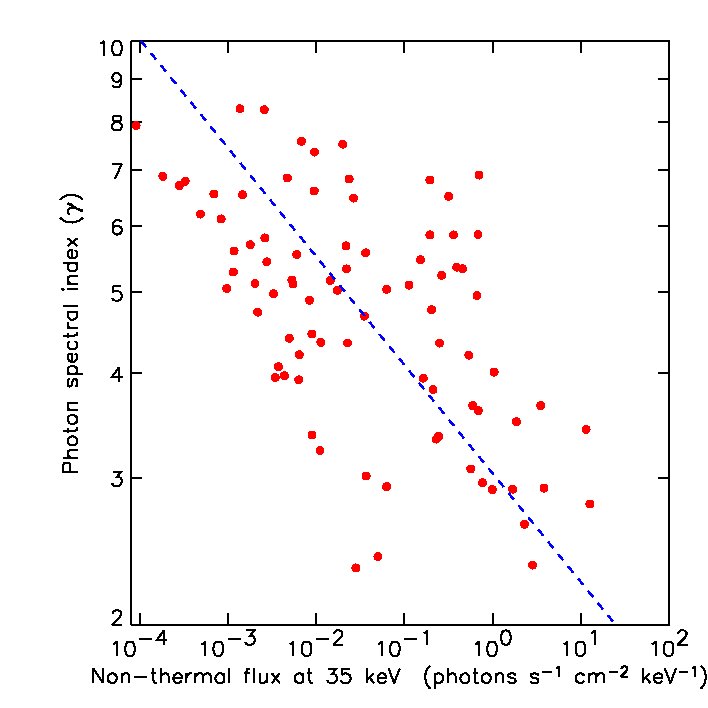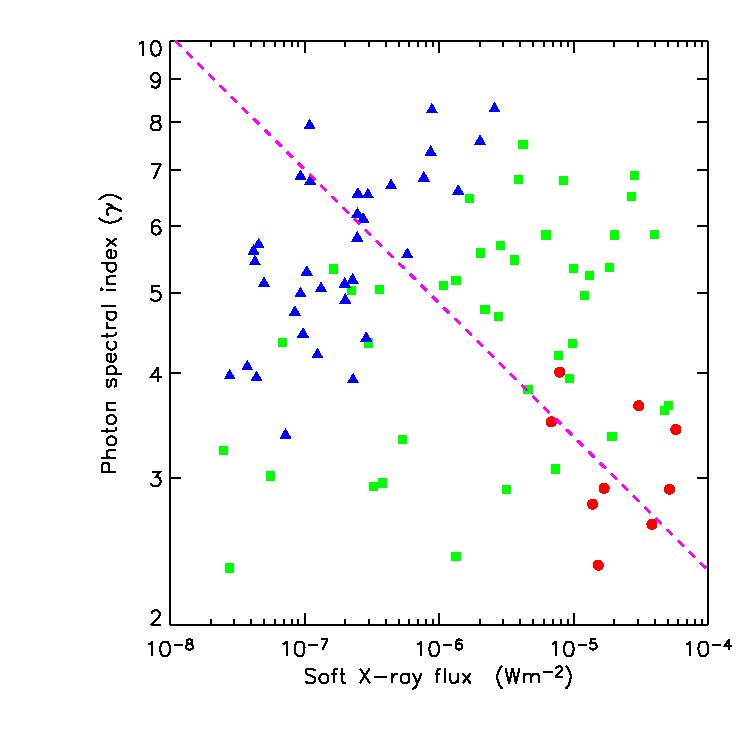
Large and small flares have been found to differ quantitatively in their (thermal) soft X-ray emission in the past. Do they differ also in the (non-thermal) hard X-ray emission? RHESSI is the perfect tool for a statistical study of flares of different sizes. Due to its high spectral resolution we have very accurate spectra and can disentangle thermal and non-thermal emission.
Here is the relation between these two parameters, which characterize the non-thermal component of a flare in the simplest possible way:

Despite the large scatter one can clearly see that flares with smaller hard X-ray flux are softer. The real world is more tricky, as there is a selection effect that excludes the lower left corner. Nevertheless we have convinced ourselves that the correlation is significant.
A different picture emerges when plotting the spectral index against the background-subtracted GOES flux:

No clear correlation can be found. However, if the events are divided into three intervals in non-thermal flux ([10-4,10-2] for blue triangles, [10-2,1] for green squares, [1,102] for red dots), they line up along the expected correlation line (dashed) with huge scatter on both sides of the line.
Thus we find that the smaller flares have softer hard X-ray spectra and thus are more difficult to detect than large flares with harder spectra. Small flares consequently add up to greater non-thermal energy than previously thought. This finding may have a serious effect on the total energy input into the corona by flares.